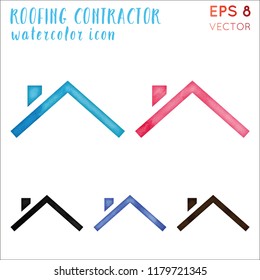Contrasting Inside Vs. Exterior Paint: Trick Differences And Uses
Contrasting Inside Vs. Exterior Paint: Trick Differences And Uses
Blog Article
Material Create By-Fitzpatrick Bernstein
When you're choosing between exterior and interior paint, it's essential to understand their fundamental distinctions that affect both efficiency and aesthetics. Inside paints are crafted for reduced VOC levels and smoother surfaces, making them optimal for indoor spaces, while exterior paints are designed to sustain harsh weather conditions and UV direct exposure. Each type serves an unique purpose, but understanding when to utilize one over the other can substantially affect your project's result. So, what elements should you think about when making your option?
Composition and Formulation
When choosing between exterior and interior paint, recognizing their composition and formulation is essential. Interior paints normally have a lower amount of unpredictable natural compounds (VOCs), making them safer for indoor air top quality. You'll discover they frequently have a smoother surface, which boosts their ability to resist spots and enables easier cleaning. They're created to endure the roughness of interior settings, including differing humidity degrees and temperature level fluctuations.
On the other hand, outside paints are developed to sustain harsher problems. They generally include higher degrees of pigments and ingredients to resist fading from UV rays, in addition to to stop mildew and mold and mildew growth. Their composition consists of much more binders and resins, which offer far better bond to surfaces revealed to the elements. This guarantees the paint can stand up to rain, snow, and varying temperature levels without peeling off or fracturing.
Efficiency and Durability
Examining performance and longevity is crucial when choosing between interior and exterior paint. Inside paint is designed for surface areas that experience much less wear and tear. It typically resists fading and scuffing, making it excellent for living spaces and bedrooms. Nevertheless, it may not stand up well in high-moisture areas like kitchens and bathrooms without appropriate formula.
On the other hand, outside paint faces harsher conditions. It's crafted to withstand UV rays, rain, and temperature level fluctuations. This kind of paint usually consists of ingredients that protect against mold and mildew growth, making certain durability in various climates. When you utilize external paint, you can expect it to last several years longer than interior paint, offered it's applied properly.
Another crucial distinction hinges on the finish alternatives. Interior paints commonly have a range of coatings for aesthetic allure, while outside paints prioritize resilience over luster. If you're trying to find something that can handle the aspects, exterior paint is your best option.
On the other hand, if you're focused on indoor aesthetic appeals with less issue for severe conditions, indoor paint may be appropriate. Ultimately, your choice should line up with the particular demands of the environment.
Visual Factors to consider
A fresh layer of paint can transform a room, but visual considerations play a vital duty in your option between exterior and interior choices. When commercial painting contractors minnesota picking paint, think about the state of mind you wish to produce. Inside paint permits you to explore a broader range of shades and surfaces, enabling you to express your personal design and enhance your home's ambiance. Whether sherwin-williams color consultation select soft pastels or vibrant colors, the appropriate indoor paint can make your spaces feel relaxing, lively, or peaceful.
On the other hand, outside paint requires to align with your home's style and the surrounding setting. Here, you're not just making a design declaration; you're additionally considering curb appeal. Selecting colors that harmonize with your area can enhance your home's value and aesthetic charm. Keep in mind that outside paint is also based on fading and weather condition adjustments, so picking a timeless shade can save you from frequent repainting.
Ultimately, take into consideration exactly how each alternative fits your vision. By straightening your paint choice with your desired visual, you can create spaces that mirror your individuality while preserving functionality.
Final thought
When it pertains to choosing paint, understanding the key distinctions in between interior and exterior options is vital. Inside paints focus on aesthetics and reduced VOCs, making them best for enhancing your interior areas. On the other hand, outside paints are made for durability and weather resistance, shielding your home from the elements. By considering your certain demands and the setting, you can with confidence choose the right paint to achieve the look and durability you desire for your space.
